River Thames: Section 5 – Oxford (Donnington Bridge) to Culham Lock
Date: Friday 29th July 2022
Distance: 9.5 miles downstream
Paddlers:
Dave Hillier (organiser)
Phil Gent (with Fifi and Coco the chihuahuas)
Chris Harper
Sue Leon
Pierre Leon (researcher)
Conrad Chambers (trip report)
Dave, as usual, issued a briefing, map, and completed risk assessment in advance of the scheduled date for the paddle.
We met up on a beautiful sunny morning at the Donnington Bridge car park (OX4 4AZ) in Oxford, where a group of guys in straw boaters with striped blazers were busy launching their large rowing boat and loading it up with food, drinks, camping gear, and a stuffed toy dog, very much in the fashion of “Three Men in a Boat”, except there were seven of them in total.
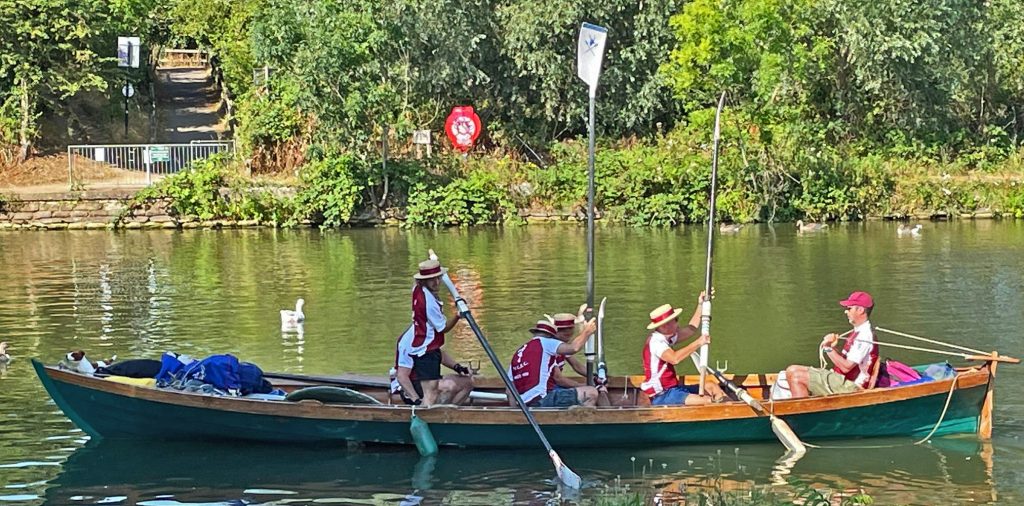
Once we’d unloaded the kayaks, Dave, Pierre and Phil headed off along with Graham to drop the vehicles at the get out – Culham Lock (OX14 3BN). Thanks yet again to Graham for coming along to facilitate the shuttle run.
On their return, Dave went through a detailed safety briefing, including a warning to be aware of the numerous rowers who were silently gliding up and down the river at a fair speed. He ensured we were all properly equipped for the paddle and it was then on to the water – a very easy launch on the slipway.
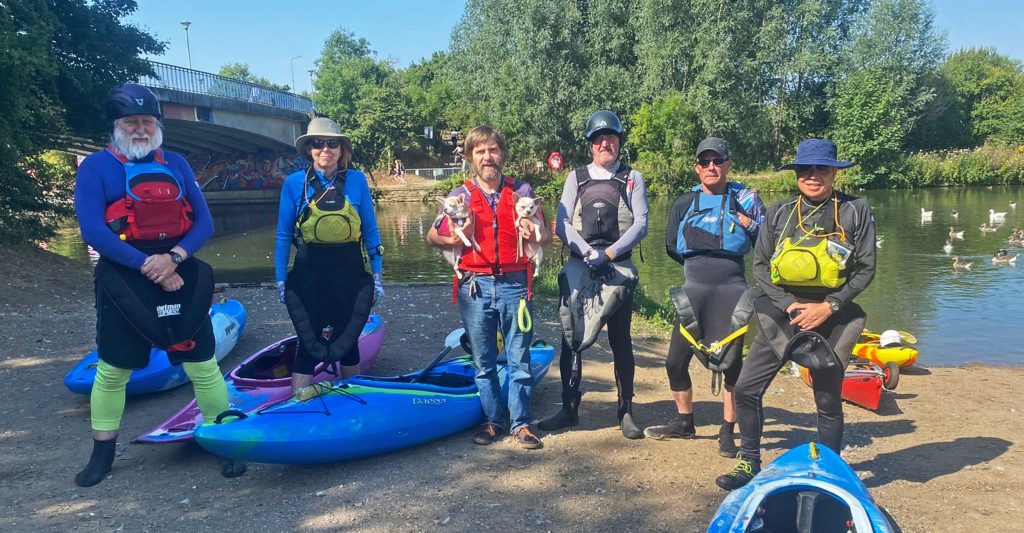
Heading downstream under Donnington Bridge, we passed several moored narrowboats and saw numerous people out for a walk or bike ride along the riverside path. Around 1/2 mile further along, we came to Iffley Lock. 3 of us got out to have a look around, and portaged near to the rollers (which are designed for portaging punts, so are not suitable for our shorter kayaks). The other 3 went through the lock, along with a couple of day hire boats – one heavily loaded with quite a few enthusiastic young men, who had brought along copious amounts of beer, and had already set about consuming it!
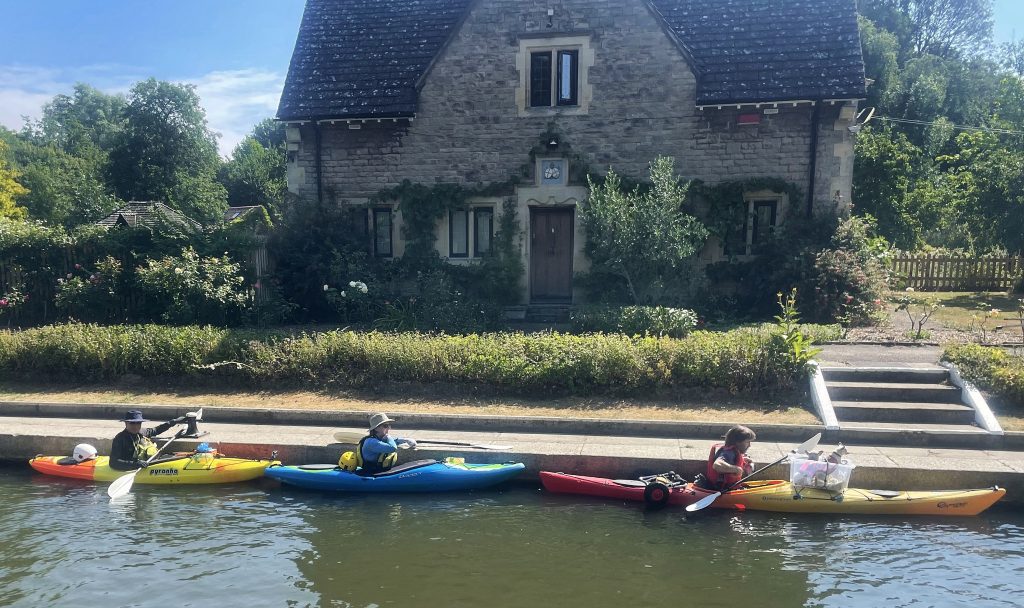
About 500m beyond Iffley Lock, we went under the A423 road bridge, where we came across some rather impressive graffiti/artwork:

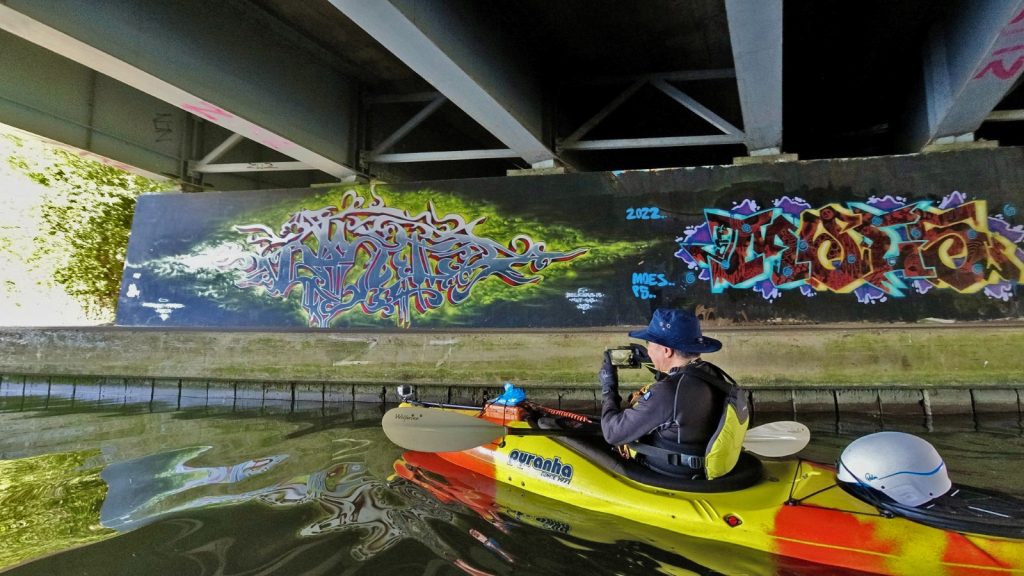
About a mile and a half further brought us to Sandford Lock, which circumvents the weir there, known as “The Sandford Lasher” – reportedly the most dangerous water in Oxfordshire! Quite a number of people have perished there over the years, and Jerome K. Jerome in his classic “Three Men in a Boat” describes the spot as ‘a very good place to drown yourself in’.
Interestingly, “The Lasher” is now also the site of a recently built hydro-electric project which generates 1.6 GWh of renewable electricity per year, enough to power over 500 households.
Leaving Sandford, the next stage was a 2.5 mile paddle to our lunch stop on Lock Wood Island. We were now well into the countryside, the river bank lined with a combination of trees and farmland. We saw many ducks, geese, swans, the occasional diving grebe, and a few red kites.
We also came across the first of 2 terrapins we were to see, sunning itself on a floating log. I, for one, have never seen one in the wild before, and wasn’t aware that they lived in the Thames:
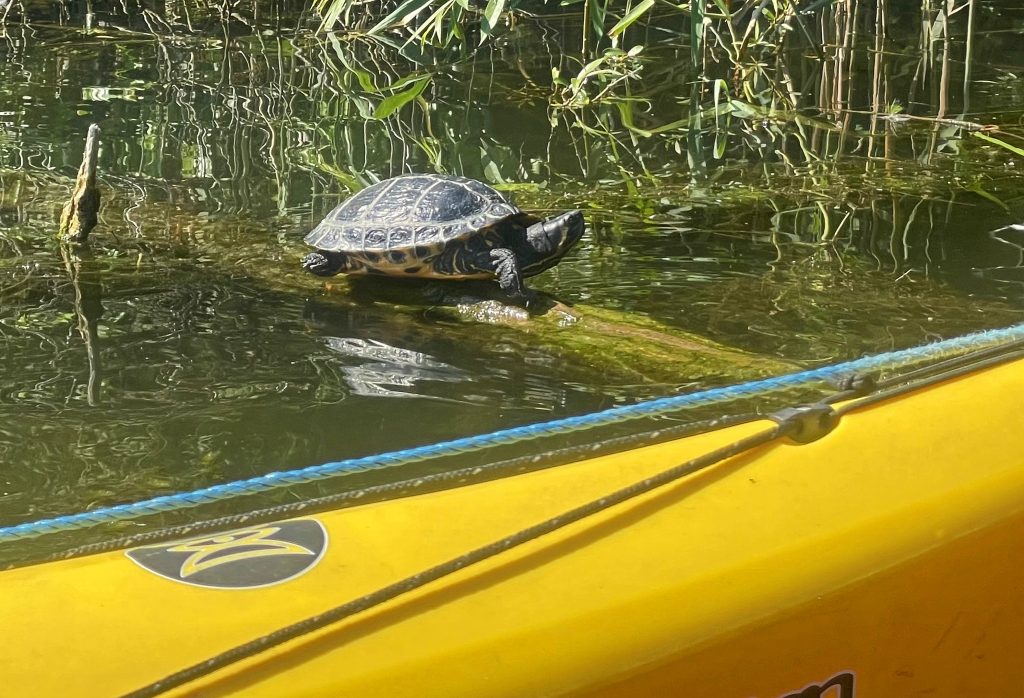
We arrived at Lock Wood Island, to find it (unsurprisingly given the name) covered in trees and bushes. We paddled round to the far side and managed to find a spot to get out, pulling ourselves, then our boats up the bank, grabbing tree roots for support.
We ate lunch in the shade, watching fish swim through the shallow water over large stone slabs – possibly the remains of a bridge which used to connect the island to the south-east bank of the river.
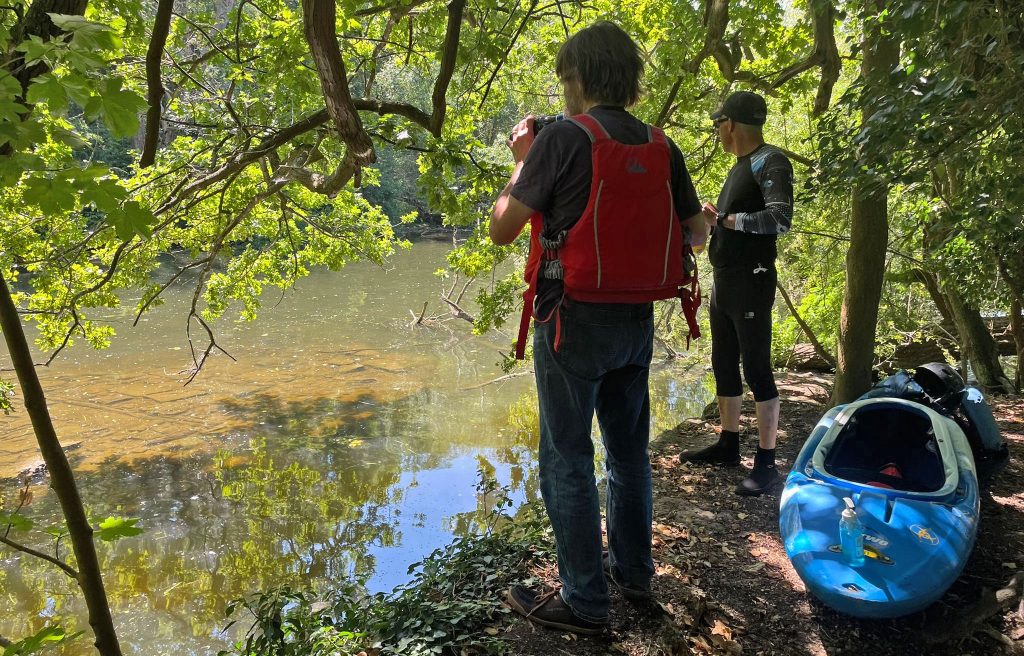
Following lunch and suitably refreshed, we had a slightly tricky seal launch to get back on the water, then it was onwards for just under 2 miles towards Abingdon Lock.
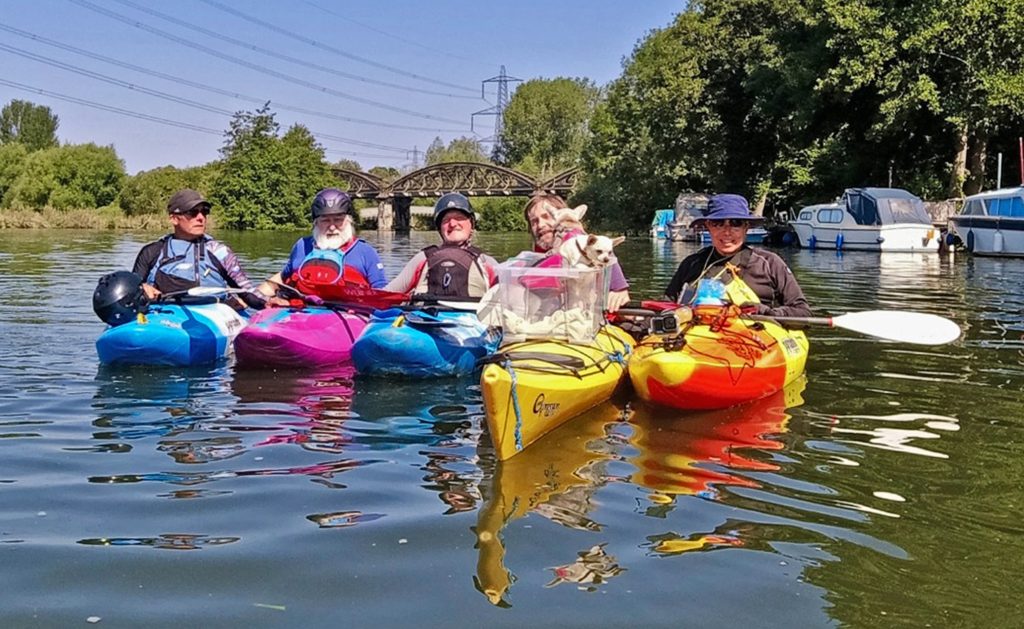
Clearly the lock-keepers had a sense of humour, and reported that they, “didn’t do too badly”, with proceeds from their official sign!
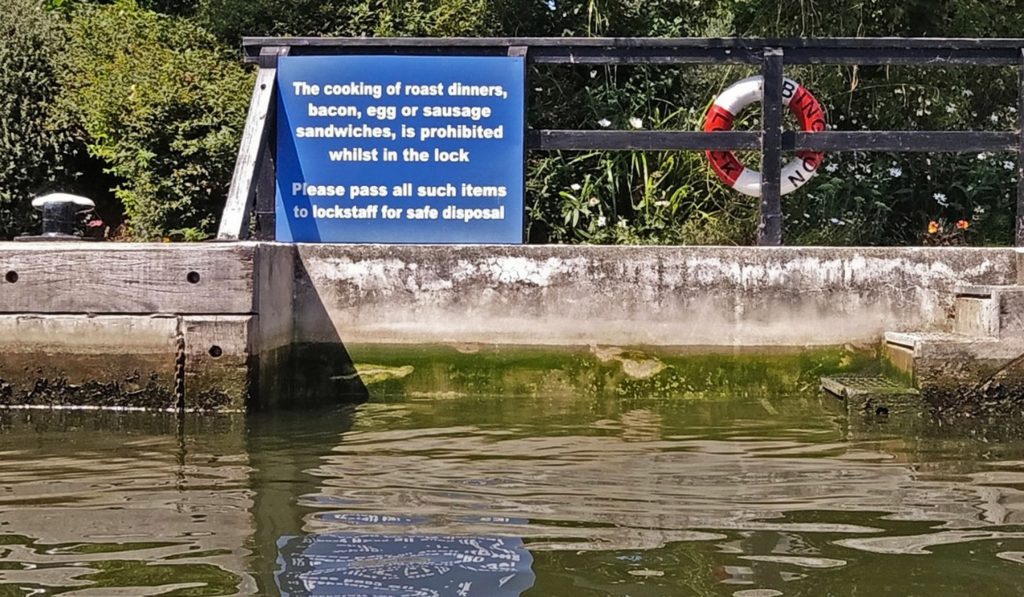
After the lock, we paddled round the corner to take a look at Abingdon weir, in the vain hope that one of the gates might be slightly open to provide a little bit of moving water. Of course, given the lack of any recent rainfall, all the gates were firmly closed, so we turned around and headed into Abingdon itself.
Just before the bridge, there was a park on the river right with many people enjoying the lovely weather, and despite there being an open air swimming pool, several people were also having fun swimming in the river itself.
We made our way through one of the smaller arches of the bridge, which Dave christened the
“batcave”.
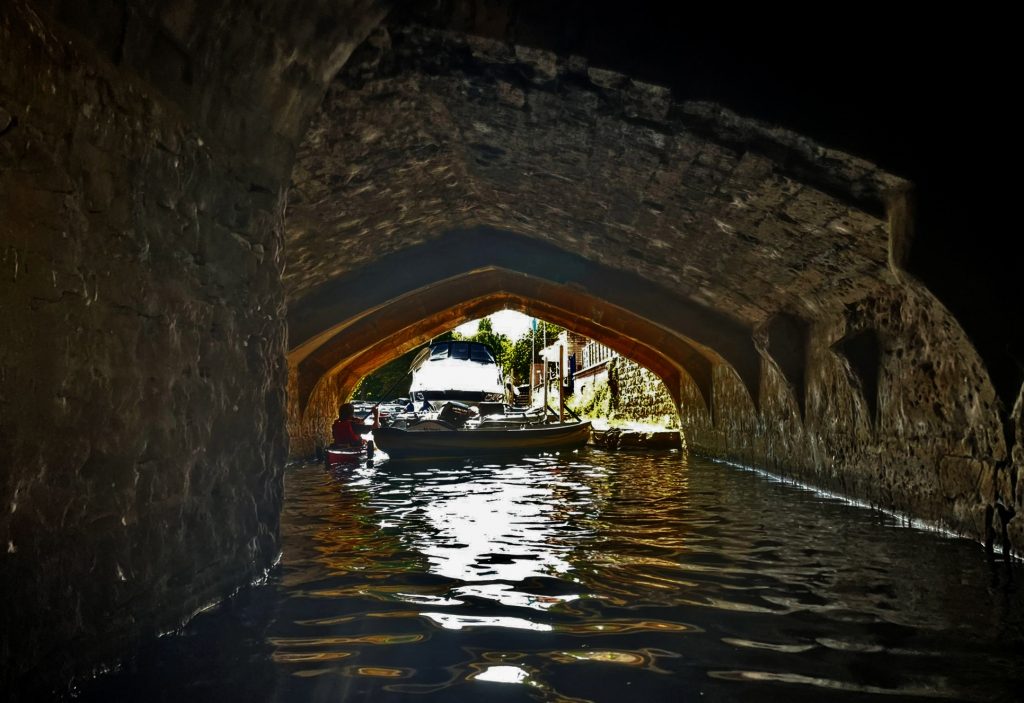
There are actually 2 bridges across the Thames at Abingdon – Abingdon Bridge and Burford Bridge, which meet in the middle of the river on Nag’s Head Island. We went through the southern (Burford Bridge) side.
Here’s the view of Burford Bridge once we’d passed through it:
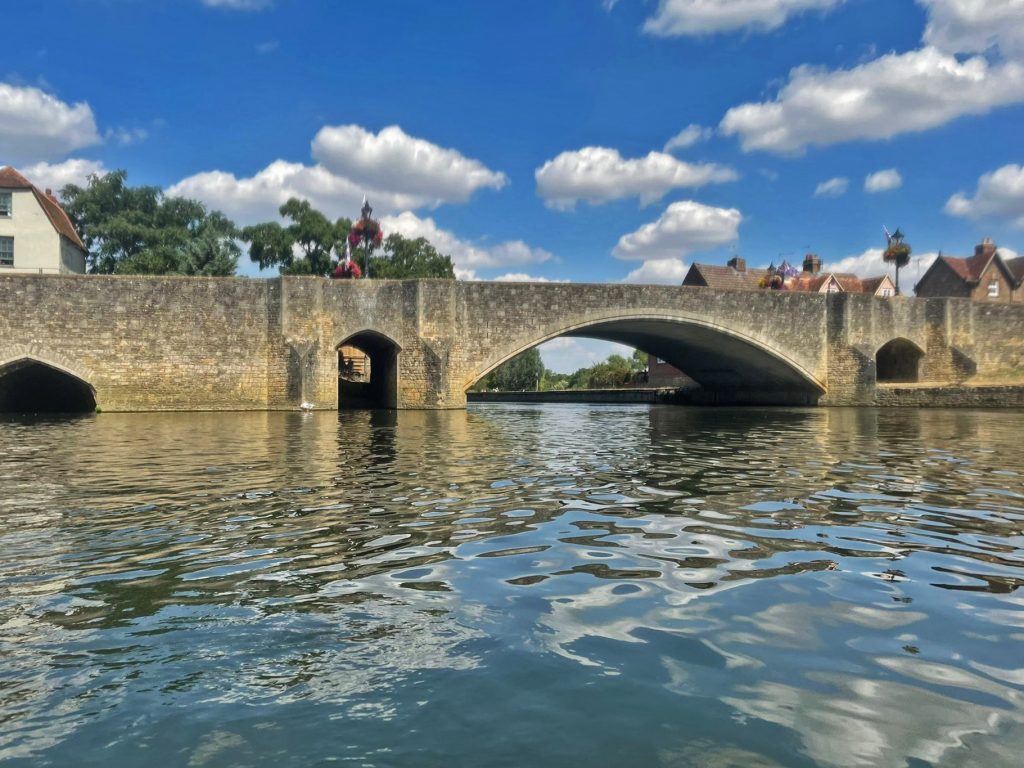
Leaving the bridge behind, we continued past Abingdon marina, and made a slight detour on river left to check out the downstream end of a channel known as Swift Ditch, a short channel which leads back upriver to the upstream side of Abingdon Lock. It is no longer used for navigation so was very quiet and a little overgrown. On another day, it would make an interesting alternative route and seemed a little reminiscent of the Amazon.
We then continued downstream for just over a mile, along Culham Cut to the get out at Culham Lock. The lock keeper was very friendly and allowed us to bring the vehicles up the short road to the lock, where we loaded up, and headed off home.
Culham Lock will be the get in, for the next leg – Stage 6 of the Thames – Culham to Wallingford, which the group will be paddling on Friday 26th August.
I’d like to thank Dave for organising yet another successful trip and everyone who came along. These Thames trips really are extremely relaxing and enjoyable, and I’d highly recommend that if there is any way people can make it on the last Friday of the month, you’d be more than welcome to come along for a great day out!
